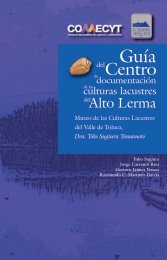You also want an ePaper? Increase the reach of your titles
YUMPU automatically turns print PDFs into web optimized ePapers that Google loves.
MARGARET CHOWNING, A BIOGRAPHY OF A CONVENT AND A PROSOPOGRAPHY OF ITS NUNS<br />
that developed in the convent correlated along<br />
lines of age at entrance: the younger women<br />
tended to be more rebellious, while those who<br />
were older when they entered the convent were<br />
less so. This pattern makes logical psychological<br />
sense; we would expect that older girls (on<br />
balance) might have made the decision to enter<br />
a convent on the basis of a more mature consideration<br />
and a truer vocation than the younger<br />
girls, and therefore might have been better prepared<br />
to make the sacrifices that were asked of<br />
them, more tolerant of what the younger women<br />
would consider excessive demands. The younger<br />
women were more likely to have been placed<br />
in the convent because of orphanhood or other<br />
family pressures. The median age at entrance<br />
of the twelve members of the rebellious faction<br />
for whom we have information was 17 years old:<br />
two of the rebellious nuns were 14 when they<br />
entered, three were 15, two were 17, one was 18,<br />
and one was 19; only three were over 20. Among<br />
the eight nonrebellious or “obedient” nuns, by<br />
contrast, only two were under 20 when they entered<br />
the convent, one of whom was the foundress,<br />
María Josepha Lina.<br />
Later in the convent’s history age at entrance<br />
increased significantly. The average age at entrance<br />
of 44 nuns who entered between 1768<br />
and 1811 was 25. From 1811 to 1853 the average<br />
age of the 18 nuns admitted to the convent increased<br />
to almost 31. Thus although historically<br />
the final cohort of six young women admitted in<br />
1854, all of whom were their 20s except for one<br />
17 year old, appears to be on the older side, in<br />
the context of admissions since 18<strong>10</strong> they were<br />
definitely perceived as very young. The aging of<br />
the convent had the impact of increasing tensions<br />
around daily work. Older nuns claimed to<br />
be (and probably were) more sickly, needing to<br />
be cared for by the younger nuns and needing<br />
the younger nuns to do their chores for them.<br />
More than one of the younger nuns expressed<br />
resentment at this.<br />
Family background<br />
Related to the age at entrance were the nuns’<br />
family circumstances. The convent contained a<br />
large number of girls who had lost one or both<br />
parents. In itself this was not unusual. One of<br />
the social functions of convents, after all, was<br />
to provide security for girls who had lost parental<br />
protection. In its early years the San Miguel<br />
convent, however, seems to have attracted an<br />
unusually large number of orphaned girls: between<br />
1756 and 1765 only 15% of the entrants<br />
into the convent had both biological parents living,<br />
compared to 47% of the women who entered<br />
the convent of Santa Catarina (Valladolid)<br />
and 36% who entered the other new convent<br />
in the bishopric, Nuestra Señora de la Salud in<br />
Pátzcuaro, during the second half of the eighteenth<br />
century. 14 Almost two-thirds (61%) of the<br />
entrants into La Purísima had no living parents<br />
at all, whether adoptive or biological, compared<br />
to 27% for Santa Catarina in the 1750s and 1760s<br />
and 30% for Nuestra Señora de la Salud from<br />
1750-99. Furthermore, one-quarter of the nuns<br />
were abandoned or natural children. In 1851 the<br />
vicar was concerned that illegitimacy (as well as<br />
old age) disqualified so many nuns from serving<br />
as abbess that he recommended temporarily, at<br />
least, making it possible for the four illegitimate<br />
nuns to stand for election (AHAMich, 1851: caja<br />
376 (XIX), exp. 52). 15<br />
When orphanhood is as common as it was at<br />
the San Miguel convent it may have had broad<br />
consequences. One of the justifications for the<br />
establishment of a convent in San Miguel was<br />
that families wanted to be able to visit their<br />
daughters (the nearest convent to San Miguel<br />
was in Querétaro, where many families had<br />
been forced to send their daughters before the<br />
establishment of La Purísima). The large number<br />
of orphans at La Purísima may have meant<br />
that there was less connection, via these family<br />
visits, to the outside world than was true at a<br />
convent like Santa Catarina in Valladolid, where<br />
many of the nuns came from prominent local<br />
families, and visitors were a frequent event. An<br />
argument could be made that the nuns at La<br />
Purísima were not as well integrated into local<br />
society, and cared less about the mores of local<br />
society and what that society thought of them,<br />
14 Data concerning Santa Catarina and Nuestra Señora de<br />
la Salud here and in the following paragraphs is drawn from<br />
scattered expedientes in the following boxes, and from<br />
other miscellaneous boxes that contain misfiled documents<br />
on these two convents. AHAMich, Diocesano, Gobierno,<br />
Religiosas, Catarinas, cajas <strong>21</strong>5-254 (XVIII); AHAMich,<br />
Diocesano, Gobierno, Religiosas, Dominicas, cajas 257-267.<br />
15 In the text of his letter, the vicar refers repeatedly to nine<br />
who were ineligible, but he only named eight, and it appears<br />
likely that he counted Ygnacia del Corazón de María twice,<br />
once as too recently professed, and once as illegitimate.<br />
74


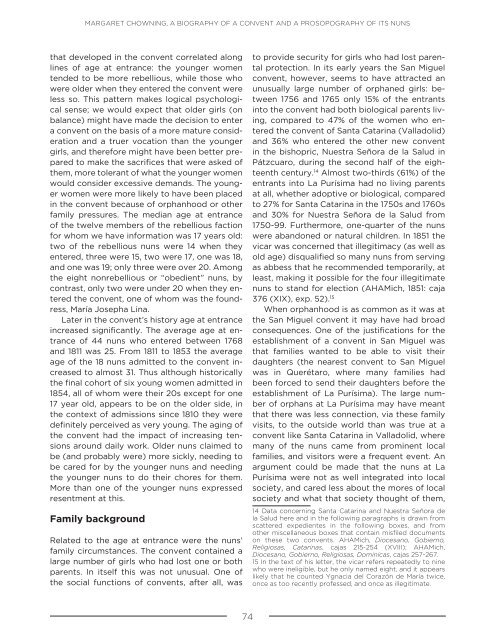
![bicentenario_1[V2]](https://img.yumpu.com/68677971/1/167x260/bicentenario-1v2.jpg?quality=85)
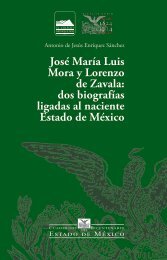
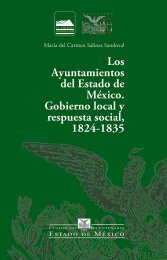

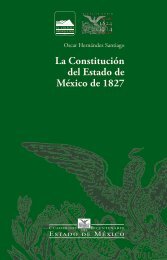
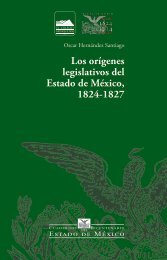
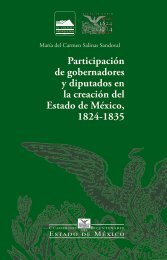
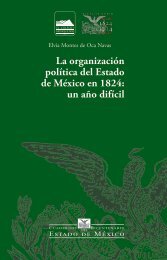
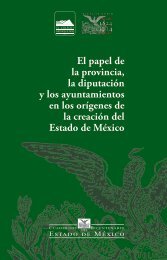
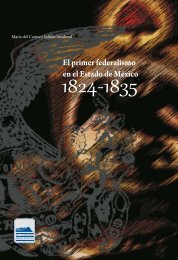
![El_primer_federalismoEM[final]_compressed (2)](https://img.yumpu.com/68483279/1/178x260/el-primer-federalismoemfinal-compressed-2.jpg?quality=85)

